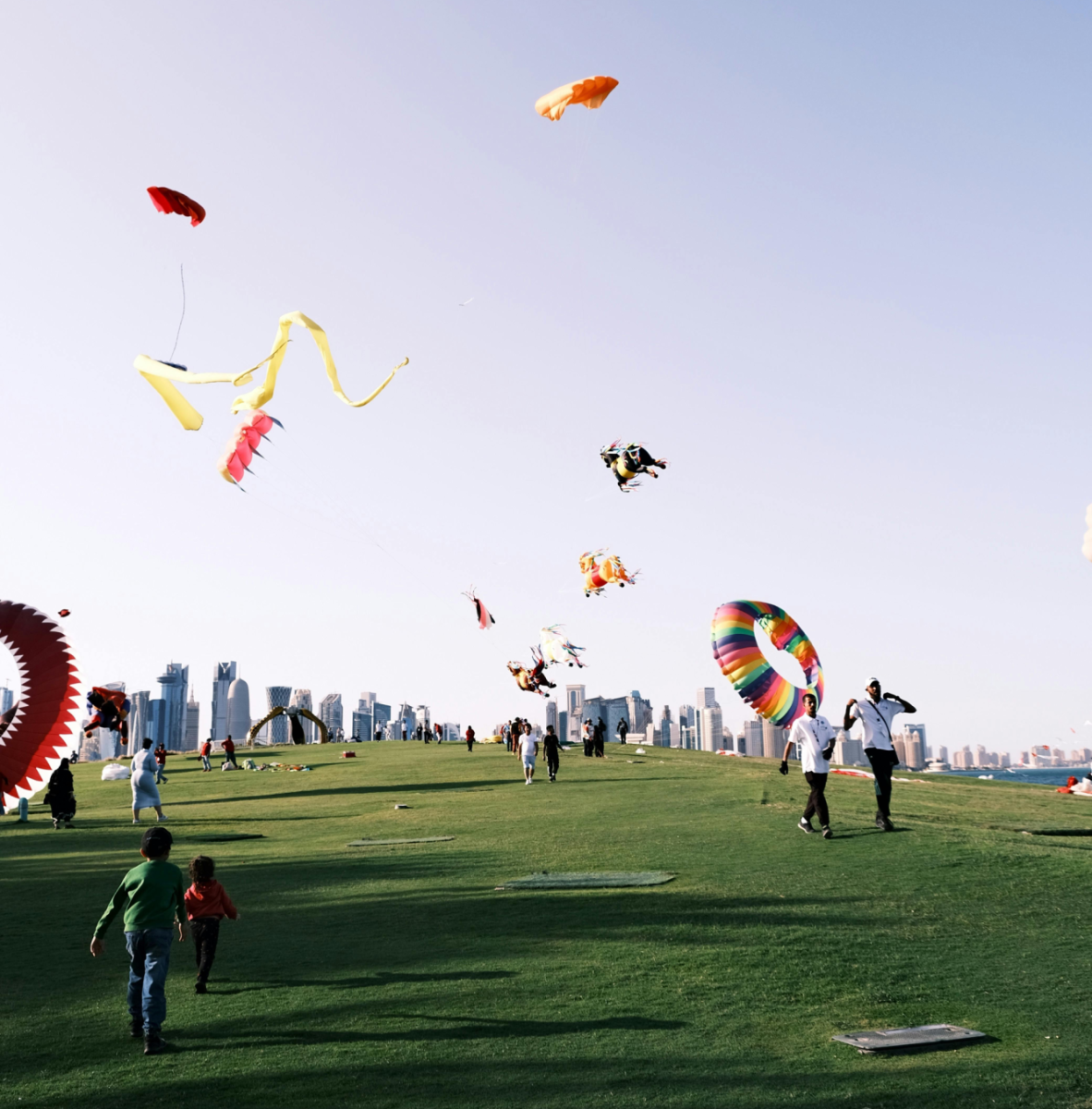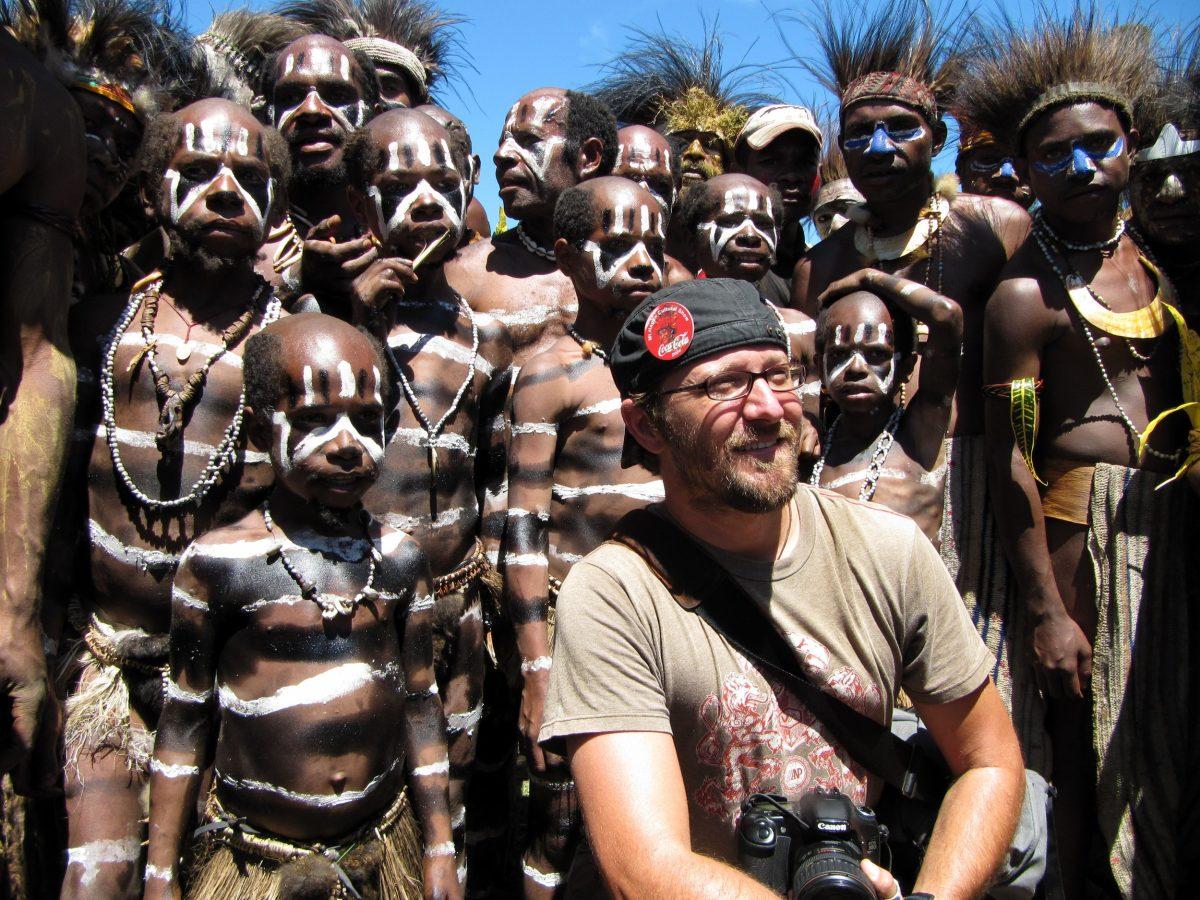ORANGE writer Devonshire Lokke talked with photographer Greg Davis about his upcoming exhibition in the Museum of the Southwest’s Myths and Legends artist series, as well as the life that led him around the world and back to Austin, Texas.
By Devonshire Lokke
On the outside, one sees a humble tin garage nestled among a train of boxy, warehouse-like workspaces. But on the inside, inspiring artwork lines the walls, enlivening the space’s laid-back atmosphere. An artist works wildly on a watercolor painting on one side of the room and bright eyes tell silent stories from portraits on the opposite walls. This is NatGeo Creative photographer Greg Davis’ studio in Austin, Texas.
Although Davis grew up in Livingston, East Texas, he has always considered Austin a second home. Davis visited Austin throughout his childhood, coming to “play in the Hill Country” at his aunts’ outdoor summer camp. Davis moved to the city in the mid-90s and has been in Austin ever since working out of Gusto Studios, which is south of the city’s downtown area. Initially lured by the country-hippie culture, artistic lifestyle and proximity to family, Davis says he wouldn’t “want to live anywhere else.”
Three years ago, Davis signed with National Geographic Creative, a group of more than 220 photographers who artistically represent the magazine’s iconic blending of global art and science. “It’s a huge honor to […] be in conversation with some of the greatest photographers that live,” Davis admits with humility and pride. Davis credits his accomplishment to a combination of “hard work, opportunity and recognition of a gift.”
Davis traces his passion for photography, but does not credit its start to, the photography he did for his high school newspaper as a teen. “The images were not very good … they were really bad, actually,” he laughs. “It was a way to kinda’ do something cool and unique, and to be in the dark room, which was always fun … watching the mystery of the image coming to the surface,” he adds. This “doesn’t exist anymore,” he says, but adds that the “magic” of this was what first spurred his interest in the art.
Despite his attraction to photography, Davis’s father encouraged him to pursue a degree in marketing. However, he says, “in 2004 I woke up and decided [that] the path for me was to leave that life, to sell everything I own, to quit the job — the big screen, the pool table, all this — to let it go and take off.” He says that his first one-year trip around the world with a $400 point-and-shoot camera was the true beginning. Although he has now spent many years as a professional photographer, Davis says his technical skills are still fairly humble. “What I use now in my work is high school art. I hate to make it sound so simple, but it really is basic principles that I use … rule of thirds, opposing colors on the color wheel, leading lines … all high school art stuff.” As for his ability to turn basic technique into emotively evocative artwork for viewers is something Davis says is almost unexplainable. “It comes naturally. I’m not thinking much when I shoot. I’m feeling more than I’m thinking,” he says. “There’s a built-in strength in photography to tell a story, and hopefully tell the truth through that,” he adds.
Austin serves as Davis’ “home base,” but his artistic endeavors have taken him on journeys around the world. Most recently, Davis traveled to India to capture the Hindu festival of Kumbh Mela — a sacred pilgrimage for practitioners of Hinduism that only occurs once every twelve years. After winning a Best in Show award at an art festival, Davis was invited by the Museum of the Southwest to show a solo exhibition in their contemporary art series Myths and Legends. The offer immediately ignited Davis’s desire to experience and photograph Kumbh Mela, which he feels fully embodies the significance of the museum’s mythological theme. “For me, in the human condition world, ‘mythical and legendary’ was Kumbh Mela,” he explains. With the help of his young assistant Travis Tank, Davis captured the festival in a twelve-minute short film called Cloth Paper Dreams to accompany the images’ story.
When asked to describe his work in the new exhibition, Davis notes that the pieces are united by one common, powerful human element. “My work has always had a spiritual nature to it,” Davis says. Many of the photos in his exhibition show “that spirituality is the core of Kumbh Mela,” he adds. The portraits in his collection reflect “the pilgrimage [being] about these people and their plight,” he explains.
To capture the festival, Davis spent eighteen days living in a tent, sometimes walking ten miles a day. Although it was supposed to be a struggle, Davis parallels the experience to everyday life. “Lets face it, life can be hard, but if you live your life with faith, devotion and purpose, then you’ll find your connection that we’re all on our own individual pilgrimages for,” he says.
For professional photographer hopefuls, Davis encourages creatives to figure out how to use his/her own “eye.” “That’s what art is all about, whether it’s writing, whether it’s poetry, whether it’s music, whether it’s painting, architecture. Creating something that people respond to, anything that’s creative, that engages,” he says.
The exhibition at the Museum of the Southwest (in Midland, Texas) is open from this Friday, the 15th, until December 29th. “We all seek to connect to something greater than ourselves, and I think that in the work for the museum you’ll resonate with that connection, you’ll see the spirituality — and hopefully the empathy — that is within all of us,” Davis says. The exhibition will move on to show at the Abilene Contemporary Art Center in October 2014. Davis also plans to premiere his short film Cloth Paper Dreams in Austin in February. Check out some of Davis’s work in Austin at his non-profit studio event at Gusto Studios on Dec. 6 from 7 p.m. to midnight, at the Armadillo Christmas Bizarre, or on his website.













































